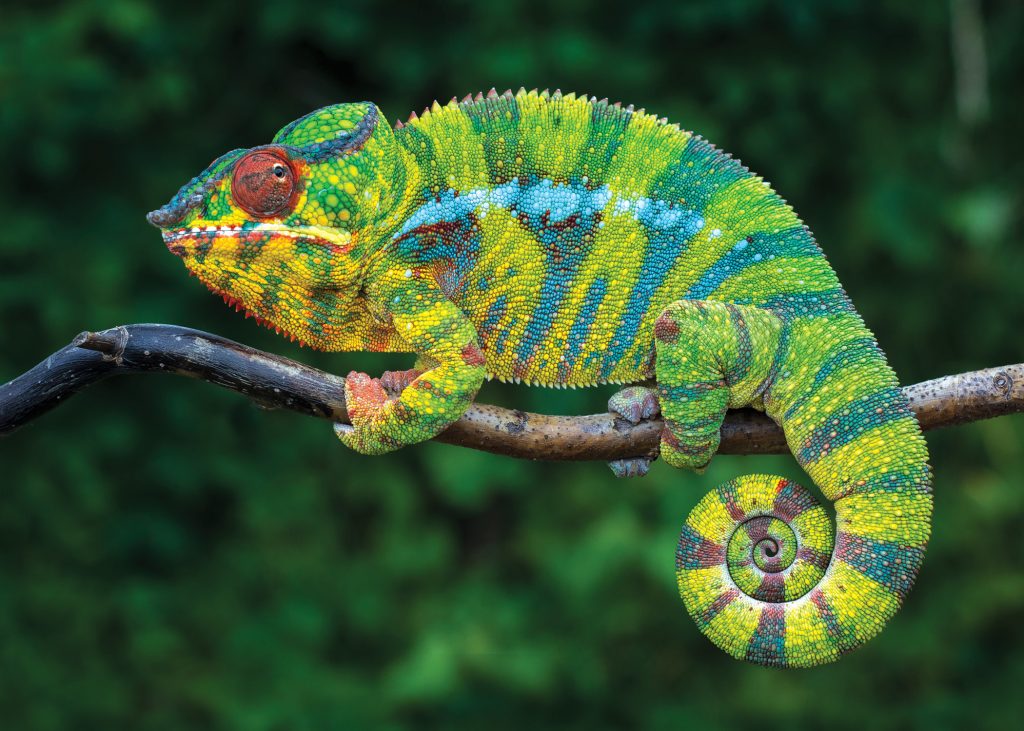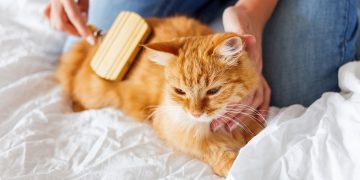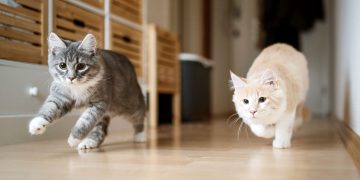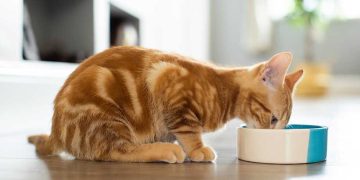Reptile owners quickly learn that shedding, or moulting, isn’t just about their scaly companions changing skins—it’s a critical biological process that reflects overall health, hydration, and nutrition. Whether you care for a leopard gecko, a bearded dragon, a ball python, or a green iguana, moulting season (also called ecdysis) demands increased attention to your pet’s diet. As their body prepares to cast off old skin and regenerate a new protective layer, reptiles rely heavily on internal nutrients to support healthy skin cell turnover, maintain hydration, and ward off complications like retained shed or skin infections. So, how do exotic pet owners build a diet that supports this complex process? In 2025, as reptile care evolves alongside improved science and wider food variety, the best moulting diets focus on species-specific needs, moisture-rich ingredients, and carefully timed supplementation.
Understanding the Moulting Process and Why Nutrition Plays a Central Role
Unlike mammals, reptiles periodically shed their entire outer skin to allow for growth and to replace worn, dry, or damaged cells. This process is hormonal, but it’s also heavily influenced by external conditions like temperature, humidity, stress, and—most importantly—diet. The nutrients your reptile receives in the days and weeks leading up to a shed determine whether the process is smooth and complete or patchy, stressful, and potentially dangerous.
In the wild, reptiles often eat a varied, seasonal diet loaded with fresh prey, vegetation, and natural moisture. In captivity, this variety is harder to replicate. Many reptiles suffer from incomplete sheds, dry patches, eye caps that don’t release, or tail tip retention—often because their diet lacks hydration, essential fats, or skin-building nutrients like Vitamin A and calcium.
By recognizing the signs of upcoming shedding—dull skin tone, increased hiding, decreased appetite, or cloudy eyes—you can preemptively support your pet with diet modifications that reduce risks and make moulting more comfortable.
Species-Specific Nutritional Needs During Shedding
Every reptile species has unique dietary requirements, and moulting intensifies these needs. Understanding your reptile’s normal nutritional profile is the foundation for supporting them during the shed cycle.
Bearded Dragons: These omnivorous lizards benefit from leafy greens, colorful vegetables, and insects. During shedding, increasing Vitamin A-rich foods like butternut squash, bell peppers, and dandelion greens helps support skin regeneration. Boosting feeder insect variety (mealworms, dubia roaches, black soldier fly larvae) ensures enough protein and healthy fats. Gut-load insects with calcium-rich greens before feeding.
Leopard Geckos: As strict insectivores, leopard geckos rely heavily on high-quality feeders. Dusting crickets or dubia roaches with calcium and Vitamin D3 powder is critical, especially leading up to shedding. Many owners find that adding a once-weekly multivitamin powder during this period helps maintain eye health and skin elasticity.
Ball Pythons: These snakes usually eat once every 1–2 weeks, and that doesn’t change drastically during shedding. However, ensuring prey is well-fed and nutrient-dense can make a difference. Never offer prey during the cloudy-eye phase, as vision impairment may make feeding stressful or dangerous. Instead, focus on hydration by offering water daily and increasing humidity.
Iguanas: Herbivorous reptiles like green iguanas need leafy greens, calcium-rich vegetables, and moisture-heavy fruits during moulting. Avoid oxalate-heavy greens (like spinach or beet greens), which can interfere with calcium absorption. Instead, rotate collard greens, mustard greens, papaya, and mango for a blend of moisture and skin-friendly antioxidants.
Chameleons: These sensitive reptiles need both precise humidity and a varied insect diet. Feed gut-loaded crickets or silkworms dusted with a mild calcium and multivitamin mix. Keep fruit offerings to a minimum, but prioritize moisture-rich feeder insects to support hydration from within.
Hydration: The Often-Overlooked Key to Healthy Shedding
Even the best diet won’t support moulting without adequate hydration. Reptiles, particularly desert species, are prone to dehydration in captivity. During moulting season, inadequate water intake can lead to dry, stuck skin that doesn’t release properly.
Encourage hydration in the following ways:
- Daily misting or bathing: Soak reptiles like bearded dragons and geckos in shallow warm water for 10–15 minutes a few times per week. This helps loosen skin and promotes water absorption through the cloaca and skin.
- Increased humidity: For tropical species, bump humidity levels by 10–20% during shedding. Use moss hides, foggers, or manual misting to maintain moisture without making the enclosure too wet.
- Offer hydration from food: Feed water-rich vegetables like cucumber, zucchini, and watermelon in small amounts to herbivores or omnivores. For insectivores, gut-load prey with juicy produce 24 hours before feeding.
- Provide clean water dishes: Even reptiles that don’t drink often should have constant access to clean water, especially during shedding. For snakes, a water bowl large enough to soak in is beneficial.

Feeding Strategies That Support the Shedding Cycle
To build a meal routine that supports shedding, timing and portion control matter just as much as ingredients.
- Feed smaller, more frequent meals leading up to the shedding period, especially for omnivores and insectivores. This keeps the digestive system active and supports metabolic function during cell regeneration.
- Pause feeding during the cloudy-eye phase for snakes and geckos, when vision is reduced. Trying to feed during this time can cause stress or defensive reactions.
- Reintroduce food gently after the shed is complete. Appetite often rebounds quickly, but always watch for signs of stuck skin, particularly around the toes, tail tip, or eyes.
- Dust insects strategically: Use calcium powder at every feeding and add a reptile-safe multivitamin once or twice per week during moulting season. Avoid over-supplementing, as too much Vitamin A or D3 can be toxic.
- Observe changes in appetite: Some reptiles will stop eating completely during shedding, while others may eat less but still show interest. Monitor weight if the fasting period extends beyond a week, especially in juveniles.
Supplements That Can Help Without Overdoing It
While a balanced diet should cover most needs, certain supplements can support skin and immune function during shedding:
- Vitamin A (in beta-carotene form) helps prevent eye caps and flaky skin. Found naturally in orange vegetables, or use a low-dose reptile multivitamin with beta-carotene.
- Calcium with Vitamin D3 is essential for all reptiles, especially if they’re not exposed to natural UVB light. Support strong new skin and prevent metabolic bone issues.
- Omega-3 fatty acids from gut-loaded insects or occasional reptile-safe oils may aid skin moisture and elasticity, though not every reptile will tolerate or need this.
- Reptile probiotics can be useful if your pet has digestion issues during moulting or after fasting.
Avoid the urge to use human skin supplements or oils directly on your reptile. They often contain additives or concentrations that are unsafe for animals.
Practical Tips for Exotic Pet Owners During Moulting Season
Aside from diet, there are several practical steps owners can take to ensure a smooth shed:
- Create shedding-friendly enclosures: Add rough but safe surfaces like branches, stones, or textured hides that allow reptiles to rub and remove old skin.
- Check frequently for retained shed on toes, tails, and eyes. Gently soak and remove with damp cotton swabs if necessary.
- Reduce stressors like enclosure changes, loud noises, or unnecessary handling during this period. Shedding reptiles are often more reclusive.
- Track shedding cycles in a journal to understand your pet’s natural rhythm. Most reptiles shed more frequently when young and slow down with age.
- Keep enclosures clean and monitor for mold or bacterial buildup, which can worsen skin health during the vulnerable moulting window.
- Communicate with your vet if shedding issues persist despite proper diet and humidity. There could be an underlying deficiency or husbandry issue.
Final Thoughts: Food as a Foundation for Healthy Shedding
Feeding your reptile during moulting season isn’t about radical changes—it’s about small, purposeful adjustments that respect their species, age, environment, and unique health needs. Whether you’re dusting feeder insects with just the right balance of calcium and vitamins or adding juicy greens to your iguana’s bowl, every bite helps build the next layer of your pet’s skin—literally. In the shedding cycle, what goes in directly affects what comes off. When you fine-tune your reptile’s diet during this delicate process, you’re not just helping them shed—you’re helping them grow stronger, healthier, and more vibrant with every new scale and patch of skin.























































